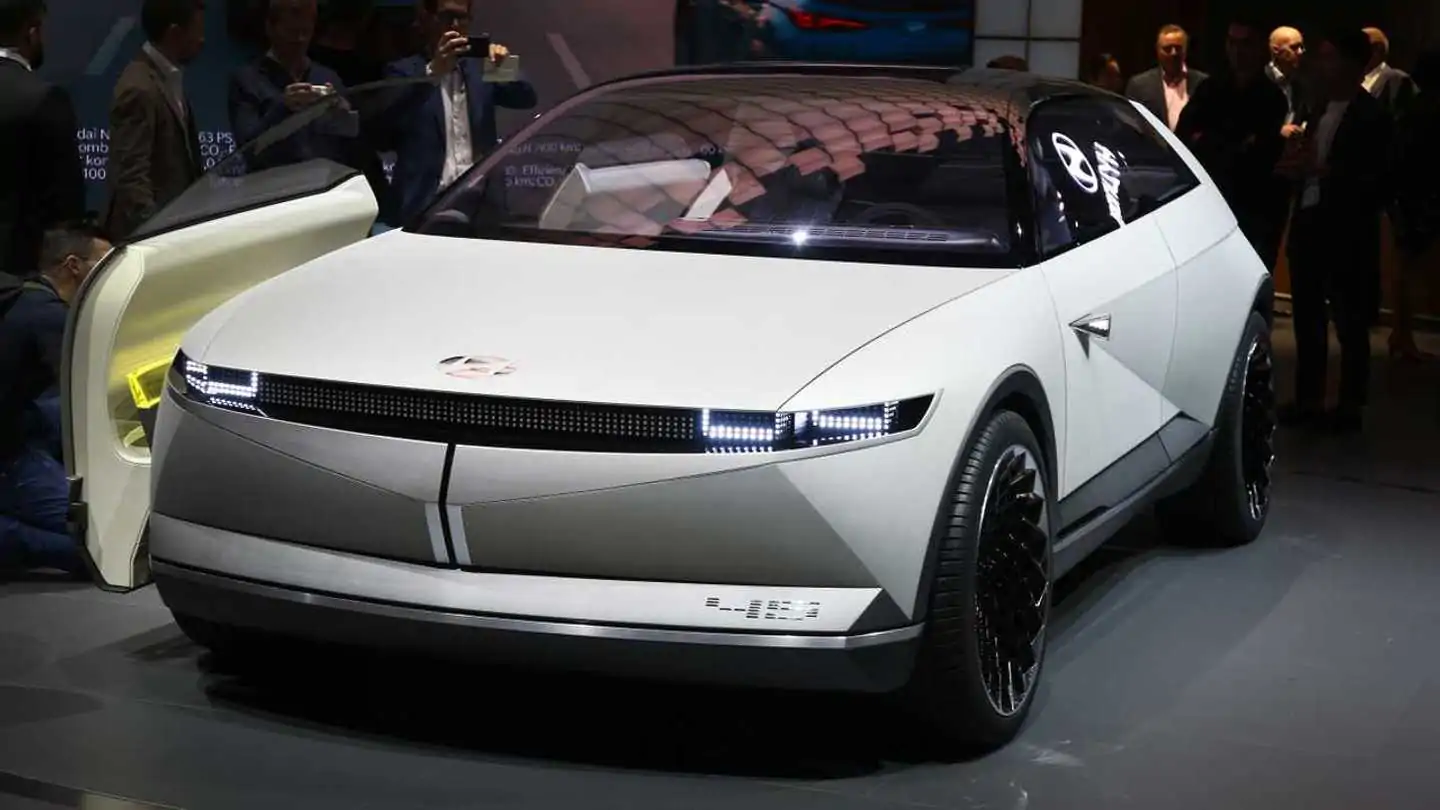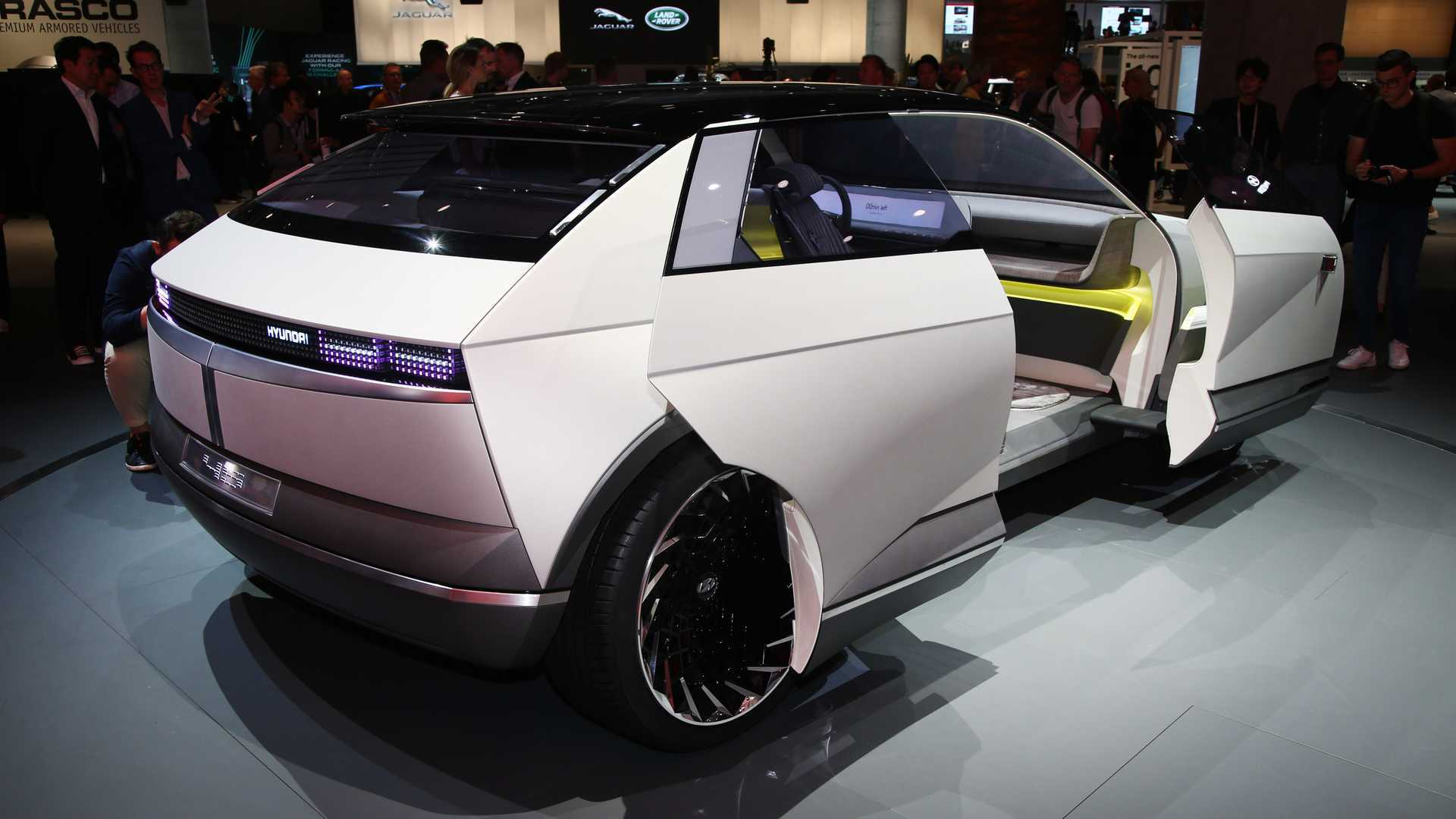This thing looks amazing!
We had a feeling that Hyundai ‘s new electric concept would be something special when it was revealed back in August. The brand’s 45 concept is quite interesting and well-designed. It serves a vital role for the company by previewing the design direction of future production EVs. We’ll get to it later.
The Push to Go Electric
Although the name is a bit strange, it actually has a simple explanation. The study examines Hyundai’s past and reveals that the Pony Coupe Concept was first introduced 45 years ago. Most strikingly, the connection is at the front. The 45 concept reinterprets the predecessor’s unique lattice radiator grille and uses a “kinetic cube lamp”.

45 is also a symbol for another thing – the 45 degree angles at the front, rear and sides form a “diamond-shaped silhouette that further foreshadows future EV model design directions.” South Korean manufacturer says the study’s “immense character” is defined by its “monocoque style body, aerodynamic, and light-weight design, which was inspired by aircrafts from 1920s.

As we have already mentioned, Hyundai has unveiled a new concept that previews the future design of its production electric vehicles. It also highlights future technological developments that may “may influence” future production vehicles.
Test of the Production Version
Camera Monitoring System is one example. It replaces side mirrors with small cameras. The embedded turntable module rotates the lens past any brush.
The exterior is simple and retro-styled while the interior is a completely different world. Hyundai’s Style Set Free strategy allows personalization and the interior is said to have been inspired by furniture design. The front seats can be rotated to face other passengers because it is an autonomous concept. The infotainment system uses a projection beam interface. This replaces the central touchscreen display and integrates smaller displays into the dashboard.